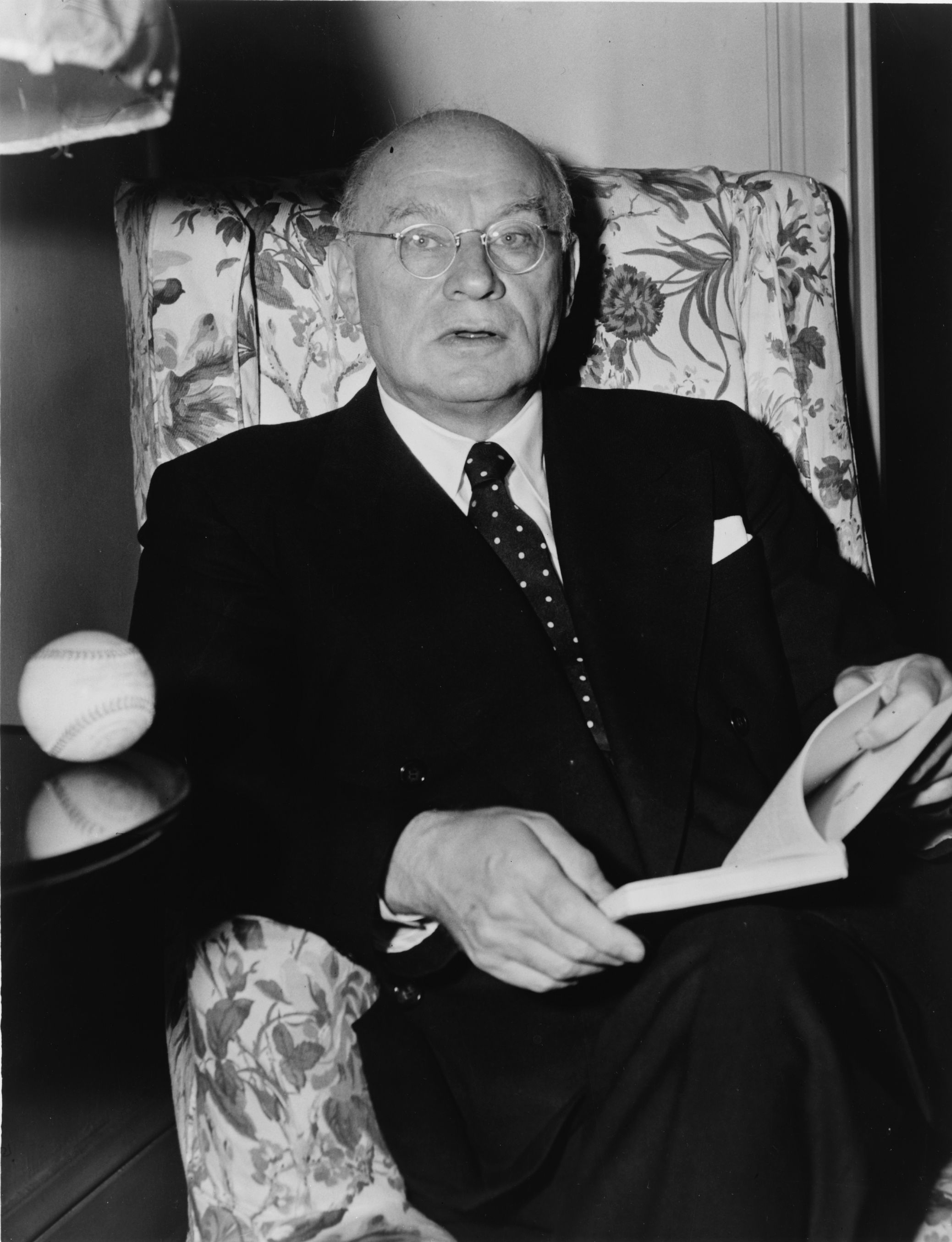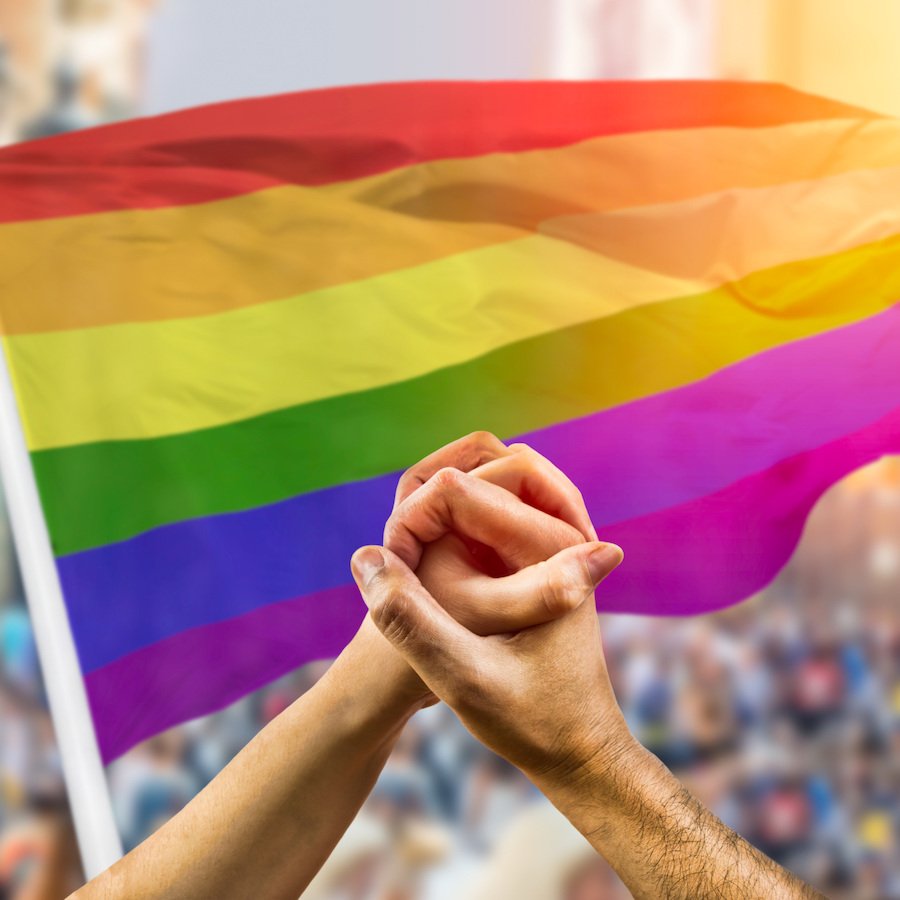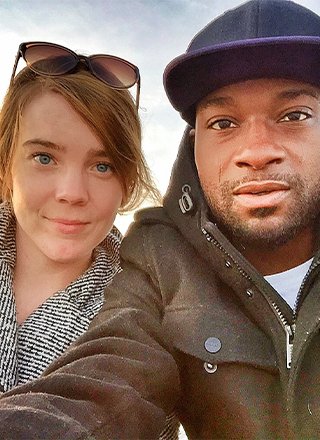On June 27, 1962, President John F. Kennedy held a press conference in the auditorium of the U.S. Department of State in Washington, D.C.
Kennedy began by making a brief statement about two issues: the movement of Chinese troops near the Taiwan Strait and his desire to see the passage of an international trade bill that was pending in the U.S. House of Representatives.
Kennedy then announced he would take questions, but the first one he got had nothing to do with Taiwan or trade. The reporter, noting that two days before the U.S. Supreme Court had issued a ruling striking down coercive forms of school prayer in a New York case, said the decision had sparked a “furor” and wanted to know what the president thought of it.
While he acknowledged that some people were unhappy with the decision, Kennedy said there was a simple solution.
“[W]e have in this case a very easy remedy, and that is to pray ourselves,” Kennedy said. “And I would think that it would be a welcome reminder to every American family that we can pray a good deal more at home, we can attend our churches with a good deal more fidelity and we can make the true meaning of prayer much more important in the lives of all of our children. That power is very much open to us.”
Fifty-eight years later, we have a president who holds very different views on school prayer. Donald Trump poses as a man of great piety and a champion of religious freedom – although his checkered personal life and policies while in office would indicate otherwise. Trump, whose most reliable base of support is white evangelicals, kowtows to Christian nationalists constantly, most recently telling them that he’s taking steps to restore school prayer. (See “Praying For A Political Payoff,” February 2020 Church & State.)
Trump, in conjunction with Attorney General William Barr and Education Secretary Betsy DeVos, subsequently issued guidelines that purport to advise public schools on how to deal with student religious freedom issues. Americans United has criticized the guidelines, saying they push the envelope and distort the law.
“We couldn’t agree more with President Trump that students should never be discriminated against for voluntarily praying at school – that is why AU fights every day to protect the First Amendment, which already guarantees them that right,” Americans United President and CEO Rachel Laser said in a media statement. “What the president has failed to do, however, is protect those students who do not wish to participate in religious activity. We have no doubt that the president’s use of his microphone to invite prayer in public schools opens the door to more constitutional violations such as students feeling pressured to bow their heads at school events or participate in team baptisms. Anyone who truly values religious freedom knows we must protect everyone’s right to pray, or not pray, as they choose, free from government intrusion.”
How did we get to the point where presidents spend time discussing school prayer during press conferences or, as Trump did, hosting public events to unveil misleading guidelines? To answer that, we have to go back in history and examine the contentious role religion has played in public education.
A Short History Of Religion In Public Education
While some of America’s founders, such as Thomas Jefferson, supported the idea of education for everyone, the concept of public education as we know it today did not catch on in America until well into the 19th century. Some states began establishing public schools (then often called “common schools”) and passing laws compelling children to be educated in the antebellum period, but there was much more growth after the Civil War.
Even then, the concept was slow to catch on. Many states had no compulsory-attendance laws even into the 20th century. But as the concept of public education began to spread, the controversy over the role religion should play in schools grew alongside it.
The issue was contentious from the beginning. Many of the early public schools reflected the religious perspective of the country’s Protestant majority and were infused with a kind of generic Protestantism.
Roman Catholics chafed against this system, but their attempts to secure their rights were often met with violence. In 1844, a three-day riot erupted in Philadelphia after Catholic parents asked that their children be excused from mandatory prayer and Bible reading. The school board was inclined to grant the request, and even that was enough to set off the mobs. During what came to be known as the “Philadelphia Bible Riots,” several people died and a few buildings were burned down, among them a Catholic church. (See “A History Of Violence,” page 8 of this issue.)
Cincinnati in the late 1860s underwent a “Bible war” that eventually ended up in state court. The Ohio Supreme Court in 1872 ruled that education officials in the city were not required to sponsor Bible reading in school. The Ohio high court did not rule that Bible reading in public schools was unconstitutional, only that the schools were not required to do it and could exclude the practice if they chose.
Still, the ruling resulted in some eloquent language: “United with government, religion never rises above the merest superstition; united with religion, government never rises above the merest despotism; and all history shows us that the more widely and completely they are separated, the better it is for both.”
The tide was turning. In 1890, the Wisconsin Supreme Court struck down required school devotionals. Nebraska’s high court followed suit in 1903. In 1910, the Illinois Supreme Court took a major step forward when it ruled that mandatory religious practices such as prayer, Bible reading and hymn singing were unconstitutional even though, in theory at least, students could be excused from worship-related activities. That wasn’t good enough, declared the court – in fact, it was harmful.
Observed the court: “The exclusion of a pupil from this part of the school exercises in which the rest of the school joins, separates him from his fellows, puts him in a class by himself, deprives him of his equality with the other pupils, subjects him to a religious stigma and places him at a disadvantage in the school, which was never contemplated. All this is because of his religious belief.”
Some state courts upheld public school prayer and Bible reading, while in other states the issue never came up. Other schools simply eliminated religious exercises on their own without being ordered to do so by a court because education officials could see the problems mandatory prayer and Bible reading were causing.
By the late 1940s, cases dealing with religion in public schools began reaching the federal courts, including the Supreme Court. The high court took steps to ensure that no student would be compelled to take part in prayer and worship against his or her will.
In the 1948 case McCollum v. Board of Education, the Supreme Court ruled that public schools could not allow clergy to come on-site and offer religious instruction under a program that was called “released time.” Although the classes were ostensibly voluntary, students who chose not to take part were ostracized and left in a classroom with nothing to do.
In 1962 and ’63, the Supreme Court handed down landmark rulings that struck down school-sponsored prayer and Bible reading. (The cases were Engel v. Vitale and Abington Township School District v. Schempp.) The decisions were unpopular at that time, and efforts were launched in Congress to amend the Constitution to restore these religious practices.
Push For School Prayer Amendments
Here’s a look at the four most prominent efforts to add school prayer amendments to the Constitution:
Becker Amendment, 1964: A number of school prayer amendments were introduced in Congress in the early 1960s; one introduced by U.S. Rep. Frank J. Becker (R-N.Y.) became the leading proposal. However, U.S. Rep. Emanuel Celler (D-N.Y.), the chairman of the House Judiciary Committee, was skeptical that an amendment was needed. He feared it would open a can of worms.
“Whose prayer will it be?” Celler asked. “Who will determine the prayer – the state, the county, school board … or the precinct level? If it’s done locally, will not the majority denomination determine the prayer?”
Celler used a variety of tactics to delay a vote on the amendment, but he was under considerable pressure. As the late church-state scholar Robert S. Alley noted in his 1994 book School Prayer: The Court, the Congress, and the First Amendment, the U.S. Junior Chamber of Commerce passed a resolution favoring the Becker Amendment, and a number of popular celebrities at the time, among them Dale Evans, Roy Rogers and Gene Autry, advocated for the amendment. Famed evangelist Billy Graham was also on board.

Celler: Foe of school prayer amendments
House hearings began on April 22, 1964, and dragged into June, although they weren’t held every day. Celler was clearly exasperated. After Becker introduced a statement into the record from a rabbi who accused the Supreme Court of advancing communism with its school prayer rulings, Celler exploded.
“I have listened to this jeremiad,” Celler told Becker. “I can’t think of anything else to call it but jeremiad. I must also make comment that this good rabbi – and I assume that he is a good rabbi – is guilty of complete distortion of facts in his statement. He misreads the Supreme Court decisions. He gives disjointed conclusions from imaginary premises. He misreads history, and he sums up imaginary ills and evil practices wholly unrelated to the Supreme Court decision and to the question at hand.”
Celler also called the rabbi’s statement “a tissue of irresponsible assertions.”
As Alley noted, mainline religious denominations had been working against the Becker Amendment all along. The National Council of Churches took a strong stand against the measure, a fatal blow to claims that the Supreme Court had instilled atheism in the public schools.
Becker was unable to secure a floor vote for the amendment, and it failed. Becker chose not to run for reelection in 1964. When he left Congress, he took his amendment with him.
Dirksen Amendment, 1966: U.S. Sen. Everett Dirksen (R-Ill.) on March 22, 1966, introduced a school prayer amendment that called for “voluntary participation by students or others in prayer.”
Dirksen had earlier in the year given a speech during which he said, “I’m not going to let nine men say to 190 million people, including children, when and where they can utter prayers.”
On Aug. 1, U.S. Sen. Birch Bayh (D-Ind.), chairman of a Senate subcommittee on constitutional amendments, began six days of hearings on the proposed amendment. The debate focused on what constituted “voluntary” prayer and whether children would feel pressured to pray in schools. Proponents of the amendment were clear that they wanted a formalized religious experience in public schools. One Baptist minister told the subcommittee, “These young people need to know the Creator of the universe. If you can help them in this, it is your responsibility to the citizens you represent to do so.”
Among those testifying against the amendment was C. Stanley Lowell, then associate director of Americans United. Lowell told the subcommittee, “In our estimate, prayer is basically of a private and personal nature and does not lend itself to government auspices.”
Although much of the testimony and debate was spirited, Bayh knew that Dirksen didn’t have the votes to pass the amendment and wanted to avoid an unpleasant, drawn-out fight on the floor of the Senate. So he introduced a non-binding sense-of-the-Senate resolution endorsing voluntary prayer in public schools.
“[I]t is the sense of the Congress that nothing in the Constitution or the Supreme Court decisions relating to religious practices in our public schools prohibits local school officials from permitting individual students to engage in silent, voluntary prayer or meditation,” the resolution read in part. It also affirmed that the president has the right to issue proclamations for holidays such as Thanksgiving.
A vote on the Dirksen amendment was held, but the measure fell nine votes short of the super-majority required for passage. Bayh’s resolution also failed to pass, but it was clear that his maneuvering had worked: The resolution gave some wavering senators cover by allowing them to vote for a pro-prayer statement.
Reagan Amendment, 1982-84: Ronald Reagan campaigned in 1980 in part on a promise to restore “voluntary prayer” to public schools. On May 6, 1982, Reagan held a White House event to reiterate his support for an amendment to that effect. Although no language was unveiled at the time, the White House did issue a briefing paper about the amendment. Americans United and other separationist groups immediately pointed out that the backgrounder implied that government officials should have the power to write prayers and pressure children to recite them.
“[S]tates and communities would be free to select prayers of their own choosing,” the briefing paper said. “They could choose prayers that have already been written, or they could compose their own prayers. If groups of people are to be permitted prayer, someone must have the power to determine the content of such prayers.”
The Rev. R.G. Puckett, then the executive director of Americans United, blasted the proposal, remarking, “President Reagan is apparently very misinformed about the Supreme Court decisions on school prayer. The courts have never said children can’t pray in school. No power on earth can stop anyone from communicating with God. What the courts did was get government out of the transaction.”
The political situation in the early 1980s had shifted with the rise of the Religious Right as a force. When the Reagan amendment was introduced a few weeks after the White House event, these groups lined up behind it. TV preacher Pat Robertson, for example, was an enthusiastic backer.
Hearings were held in the Senate sporadically during the latter half of 1982 and into 1983. According to Alley, much of the debate hinged on the word “voluntary.” Some senators were unhappy with the Reagan amendment and put forth their own versions. The amendment reached the Senate floor on March 20, 1984. The final tally was 56-44, which was 11 votes short of the two-thirds required.
Istook Amendment, 1995-98: Shortly before the mid-term elections in fall 1994, U.S. Rep. Newt Gingrich (R-Ga.) gave a speech at the Heritage Foundation in Washington, D.C., during which he attacked the Supreme Court for its school prayer decisions and vowed to pass a school prayer amendment if the Republicans were to take control of the House.
The GOP swept the November elections, and Gingrich became Speaker of the House in 1995 after the Republicans took the majority there for the first time in 40 years. He quickly turned the project over to U.S. Rep. Ernest Istook (R-Okla.), who consulted with Religious Right groups to draft the amendment.
But the Religious Right got greedy. Its attorneys decided to formulate a much broader amendment, one that would topple the church-state wall. They spent a few years arguing among themselves, and then emerged with an amendment that would have not only authorized official school prayer but also, outrageously, permitted the government to display religious symbols and extended taxpayer funding to religious schools and other institutions. Lacking any sense of irony, they called it the “Religious Freedom Amendment.”
Americans United played a key role in forming a broad coalition to oppose what was called the Istook Amendment. After much maneuvering, the amendment, H.J. Res. 78, reached the House floor on June 4, 1998. Debate on the proposal lasted more than six hours and featured the usual far-right bromides about school prayer. At one point Istook asserted, “As prayer has gone out of schools, guns, knives and gangs have come in.”
But the First Amendment had several champions that day, mainly U.S. Reps. Robert C. “Bobby” Scott (D-Va.), Chet Edwards (D-Texas), Sheila Jackson Lee (D-Texas), Lynn Woolsey (D-Calif.), Jerrold Nadler (D-N.Y.), Sherwood Boehlert (R-N.Y) and Amo Houghton (R-N.Y.). At one point, Scott asked a pointed question: “How safer will our schools be when children begin fighting over which prayers will be said or which religious expressions should or should not take place before each class day?”
The Istook Amendment garnered a simple majority of 224-203 in the final vote – but that was 61 votes shy of the number needed for passage. After the vote, Edwards summed up the feeling of many separation advocates when he said, “I’m ecstatic that we have preserved the Bill of Rights and its protection of religious freedom. But I cannot celebrate the fact that a majority of House members were willing to vote against the first 16 words of the Bill of Rights.”
Istook reintroduced the amendment in 1999, 2001 and 2003, but it never received another vote and he retired from the House in 2006.
Where We Are Now
While the Trump-Barr-DeVos school prayer offensive doesn’t take the form of a constitutional amendment, it’s still a threat. Americans United will remain vigilant and will work to ensure that America’s public schools, which educate 90 percent of our young people, remain welcoming to all of them.
AU also works to oppose legislation in the states that would undermine the rights of public school students, including bills promoting so-called “student-initiated” prayer, Bible classes, “In God We Trust” displays, anti-science creationist measures and others. Many of these proposals are pushed by the backers of Project Blitz, a drive to pass Christian nationalist legislation in the states. (See “Bracing for the Blitz,” November 2018 Church & State.)
We come full circle. In September 1963, Church & State made a comment about school prayer that still rings true today: “Coerced religion is not religion. When you coerce it, you lose it. Its essence can be discovered only in a search voluntarily initiated, in an assent freely given. In the church, yes. In the home, yes. Whenever the individual chooses, yes. Under official orders in a public school – hardly.”


